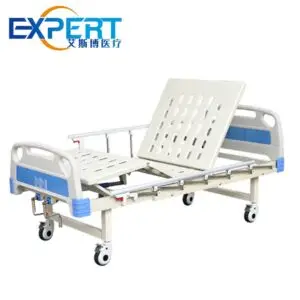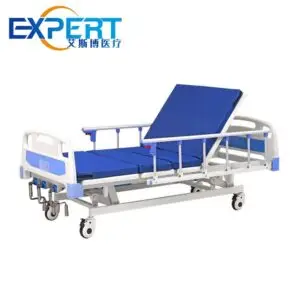Address
304 North Cardinal St.
Dorchester Center, MA 02124
Work Hours
Monday to Friday: 7AM - 7PM
Weekend: 10AM - 5PM
Before we dive into the content, I’d love for you to join me on my social media platforms where I share more insights, engage with the community, and post updates. Here’s how you can connect with me:
Facebook:https://www.facebook.com/profile.php?id=100071234835011
LinkedIn:https://www.linkedin.com/company/74943205/admin/dashboard/
YouTube:www.youtube.com/@shandongexpertmedicalequip4695
TikTok:www.tiktok.com/@expertmedical
Now, let’s get started on our journey together. I hope you find the content here insightful, engaging, and valuable.

Hospital adjustable beds have revolutionized patient care by providing a level of comfort, functionality, and therapeutic benefits that were once unimaginable. These specialized beds offer numerous advantages for patients, healthcare providers, and facilities. In this comprehensive guide, we will explore the various benefits of hospital adjustable beds and how they contribute to improved patient outcomes.
The Evolution of Patient Care
In the past, hospital beds were static structures that offered little flexibility. Patients were often confined to a single position for extended periods, which could lead to discomfort, pain, and a host of health complications. The advent of hospital adjustable beds marked a significant turning point in patient care, allowing for greater customization and personalization.
The Science Behind the Benefits
The design of hospital adjustable beds is rooted in scientific principles. By enabling precise positioning of the head, feet, and knees, these beds can help to:
Before delving into the benefits, it’s essential to understand what a hospital adjustable bed is. Unlike traditional hospital beds, adjustable beds allow for precise positioning of the head, feet, and knees. This flexibility is achieved through the use of motors or manual controls that adjust the bed’s sections.
A typical hospital adjustable bed consists of several key components:
One of the most significant advantages of hospital adjustable beds is their ability to be customized to meet the specific needs of each patient. By allowing patients to find their optimal sleeping position, these beds can improve comfort, reduce pain, and promote restful sleep.









The human body is designed to function optimally in certain positions. By allowing for a wide range of positions, hospital adjustable beds can:
By providing patients with greater control over their environment, hospital adjustable beds can empower them to take an active role in their own recovery. This can lead to increased self-esteem, reduced anxiety, and a more positive outlook on the healing process.
Hospital adjustable beds can be used to facilitate a variety of therapeutic interventions, including:
A comfortable and supportive sleep environment can have a profound impact on a patient’s mental well-being. By reducing pain and discomfort, hospital adjustable beds can help to improve sleep quality, reduce stress, and enhance mood.
Hospital adjustable beds can help healthcare providers to work more efficiently by:
| Feature | Benefits for Patients |
|---|---|
| Height adjustment | Facilitates transfers, promotes independence |
| Backrest adjustment | Provides comfort, improves respiratory function |
| Knee flexion | Alleviates pressure on the lower back, promotes healing |
| Trendelenburg and reverse Trendelenburg positions | Improve circulation, facilitate drainage |
| Side rails | Provide safety and security |
| Built-in scales | Monitor weight changes |

Hospital adjustable beds offer a multitude of benefits for patients, healthcare providers, and facilities. By providing enhanced comfort, promoting independence, and facilitating healing, these beds play a vital role in modern healthcare. As technology continues to advance, we can expect to see even more innovative features and benefits incorporated into hospital adjustable beds.
What is the difference between a hospital bed and a regular bed?
Hospital beds are designed for medical use and offer adjustable features like head and foot elevation, as well as side rails for safety. Regular beds are primarily for sleeping and lack these specialized features.
How do I choose the right hospital adjustable bed for my needs?
Consider factors such as the patient’s specific needs, the bed’s weight capacity, the type of adjustments required, and any additional features like built-in scales or alarms. Consult with a healthcare professional or a medical equipment supplier for personalized advice.
What are the maintenance requirements for a hospital adjustable bed?
Regular cleaning with mild detergent and water is essential. Lubricate moving parts as recommended by the manufacturer. Inspect the bed periodically for signs of wear and tear, and address any issues promptly.
Are hospital adjustable beds covered by insurance?
Insurance coverage for hospital adjustable beds varies depending on the specific insurance plan, the patient’s medical condition, and local regulations. It’s best to consult with your insurance provider to determine coverage eligibility.
Can I use a hospital adjustable bed at home?
Yes, hospital adjustable beds can be used at home. However, it’s important to ensure that the bed is suitable for home use, considering factors like space, weight capacity, and ease of operation. Consult with a healthcare professional or a medical equipment supplier for guidance.
